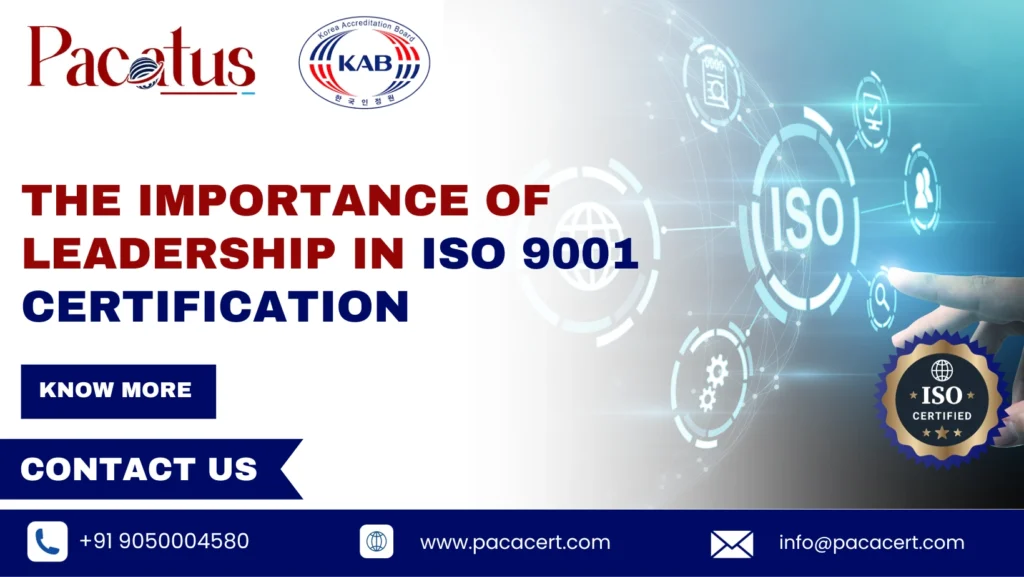The Role of Leadership in ISO 9001 Implementation
Get ISO 9001 Certificate
Vision and Methodology
Setting Clear Destinations:
Authority is mindful for understanding the broader viewpoint of ISO certification. Pioneers must characterize clear targets, like making strides item quality, upgrading client fulfilment, or streamlining forms, and communicate these destinations over the organization.
Asset Allotment
Committing Assets:
Compelling execution of ISO benchmarks requires time, staff, and monetary assets. Administration must guarantee satisfactory assignment of these assets, considering both prompt and long-term prerequisites.
Building a Culture of Brilliance
Championing ISO Values:
Pioneers serve as part models, displaying the commitment to the ISO standards. By encapsulating these values, they can rouse their groups to endeavour for the same measures.
Advancing Persistent Change:
ISO isn’t approximately accomplishing a one-time certification. It’s a travel of ceaseless change. Authority ought to instil a culture where workers are continuously searching for ways to improve quality and productivity.

Are You Looking To Enhance Your Business Credibility And Quality Standards ?
Preparing and Advancement
Contributing in Worker Improvement:
For the workforce to maintain ISO benchmarks, they require the proper preparing. Authority must prioritize normal preparing sessions and workshops to familiarize workers with the ISO prerequisites and overhauls.
Communication
Normal and Clear Communication:
Pioneers must guarantee that each group part is educated around the ISO guidelines, their significance, and how they coordinated into the everyday operations. This includes setting up standard communication channels like gatherings, pamphlets, or overhauls.
Checking and Audit
Executing Input Components:
To find out in case ISO frameworks are viably imbued, pioneers must set up vigorous criticism instruments. This incorporates occasional reviews, audits, and studies.
Tending to Non-conformities:
When disparities emerge, it’s the leadership’s duty to guarantee remedial measures are taken quickly, guaranteeing the system’s keenness remains intaglio.
Celebrating Victories and Learning from Disappointments
Recognizing Accomplishments:
When points of reference are accomplished or when groups exceed expectations in keeping up ISO measures, administration ought to recognize and compensate these endeavours. This cultivates inspiration and emphasizes the significance of maintaining these guidelines.
Learning Introduction:
In cases of mishaps or non-conformities, pioneers must receive a learning approach, analysing what went off-base and guaranteeing such issues are maintained a strategic distance from within the future.
Partner Engagement
Building Outside Believe:
Administration plays a crucial part in communicating the organization’s commitment to ISO measures to outside partners, be it clients, providers, or financial specialists. These builds believe and reinforces the organization’s notoriety within the advertise.
In conclusion, whereas ISO systems give an organized system for organizations to attain brilliance, it is the administration that breathes life into this structure. From vision setting to asset assignment, from preparing to communication, from checking to partner engagement – administration is the linchpin that holds the ISO execution travel together. As the saying goes, “A framework is as it were as great as the individuals who utilize it,” and authority guarantees that the individuals are not fair utilizing but exceeding expectations with the framework.
Documents Required for Applying ISO Certification

Company / Service Govt. Registration Proof

Valid Letter Head including Address

Quality Manual

